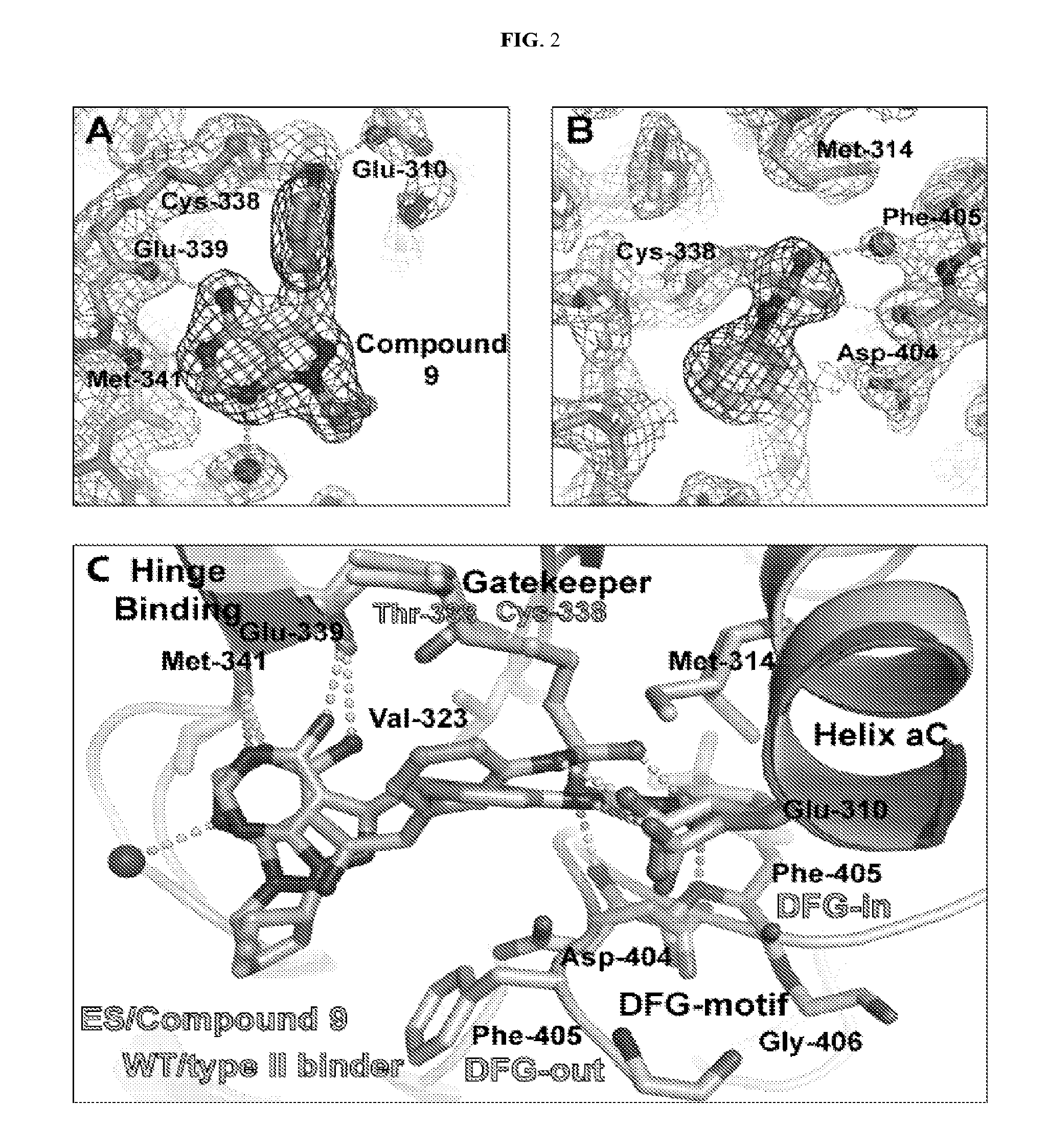Methods and compositions for kinase inhibition
a kinase inhibitor and composition technology, applied in the direction of biocide, chemical treatment enzyme inactivation, transferases, etc., can solve the problems of difficult to develop selective atp-competitive inhibitors, difficult to obtain selective inhibitors for any one kinase, and impair the activity of kinas
- Summary
- Abstract
- Description
- Claims
- Application Information
AI Technical Summary
Benefits of technology
Problems solved by technology
Method used
Image
Examples
example 1
Preparation of 3-(3-aminophenyl)-1-isopropyl-1H-pyrazolo[3,4-d]pyrimidin-4-amine (22)
[0314]This compound was prepared in a similar procedure to that used for (18).
example 2
Preparation of 3-(4-aminophenyl)-1-isopropyl-1H-pyrazolo[3,4-d]pyrimidin-4-amine (23)
[0315]This compound was prepared in a similar procedure to that used for (18).
example 3
Preparation of N-(3-(4-amino-1-isopropyl-1H-pyrazolo[3,4-d]pyrimidin-3-yl)phenyl)acrylamide (1)
[0316]
[0317]A solution of tetrahydrofuran (20 mL), compound 22 (219 mg, 0.817 mmol) and diisoproylethylamine (156 μL, 0.895 mmol) was cooled to 0° C. Acryloyl chloride (67 μL, 0.828 mmol) was added and the reaction was allowed to proceed for 1 hour and afterwards concentrated in vacuo. The residue was dissolved in dichloromethane (20 mL) and washed with saturated sodium bicarbonate (20 mL). The aqueous layer was extracted with dichloromethane (2×20 mL). The combined organic layers were dried with MgSO4, filtered and concentrated in vacuo. The product was purified by preparative RP-HPLC and lyophilized (70 mg, 26% yield): 1H NMR (400 MHz, DMSO) δ 10.40 (s, 1H), 8.38 (s, 1H), 8.04 (s, 1H), 7.73 (d, J=8.0, 1H), 7.52 (t, J=7.9, 1H), 7.39 (d, J=7.7, 1H), 6.47 (dd, J=17.0, 10.1, 1H), 6.29 (dd, J=17.0, 2.0, 1H), 5.80 (dd, J=10.1, 2.0, 1H), 5.11 (hept, J=6.6, 1H), 1.51 (d, J=6.7, 6H); 13C NMR (100...
PUM
| Property | Measurement | Unit |
|---|---|---|
| Electrophilic | aaaaa | aaaaa |
Abstract
Description
Claims
Application Information
 Login to View More
Login to View More - R&D
- Intellectual Property
- Life Sciences
- Materials
- Tech Scout
- Unparalleled Data Quality
- Higher Quality Content
- 60% Fewer Hallucinations
Browse by: Latest US Patents, China's latest patents, Technical Efficacy Thesaurus, Application Domain, Technology Topic, Popular Technical Reports.
© 2025 PatSnap. All rights reserved.Legal|Privacy policy|Modern Slavery Act Transparency Statement|Sitemap|About US| Contact US: help@patsnap.com



